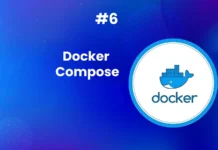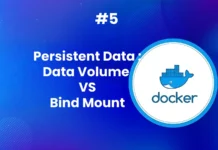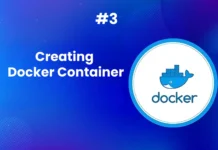The Dockerfile serves as the blueprint for creating Docker images, containing the step-by-step instructions needed to build a container. It’s more than just a list of commands—it’s a powerful tool for optimizing your image builds, reducing build times, and ensuring consistency across environments.
1. The Structure of a Dockerfile
At its core, the Dockerfile is made up of different commands (referred to as stanzas) that Docker executes sequentially. Each line in the Dockerfile forms a new layer in the image. Understanding this structure is key to creating efficient Dockerfiles that minimize redundancy and speed up builds.
For instance, the FROM command, which starts every Dockerfile, pulls the base image (like Debian or Alpine) from Docker Hub. This base image is stored in the local cache, allowing Docker to reuse it without re-downloading it every time the image is built. As you move down the file, each subsequent instruction (e.g., RUN, COPY) adds a new layer to the image.
2. The Magic of Docker Build Cache
One of Docker’s most efficient features is its ability to cache layers. Each time you build an image, Docker checks if a layer has changed. If the layer hasn’t changed, Docker reuses the cache for that step, drastically reducing build times for subsequent builds.
When building your Dockerfile, you can tag the image with a name, like custom-nginx, using the docker build command. Afterward, Docker runs through each step of the Dockerfile. If no changes are detected in the previous layers, Docker skips those steps and indicates “using cache” in the output. This is a critical feature for developers iterating on source code without modifying the base setup or application dependencies.
For example, if you add an additional exposed port (e.g., 8080), Docker will only rerun the layer that’s changed, leaving all previous layers intact. This is why line ordering is crucial; placing frequently changed layers at the bottom of the Dockerfile ensures you’re not rebuilding unnecessary layers.
3. Common Dockerfile Commands
# 1. Define the base image
# Using a minimal Debian base image to keep the size small
FROM debian:latest
# 2. Set environment variables
# This can be useful for setting global variables for your container
ENV APP_HOME=/usr/src/app
ENV DEBIAN_FRONTEND=noninteractive
# 3. Create a directory and set it as the working directory
RUN mkdir -p $APP_HOME
WORKDIR $APP_HOME
# 4. Run commands to install packages
# Updating package lists and installing some dependencies
RUN apt-get update && \
apt-get install -y \
curl \
vim \
python3 \
&& rm -rf /var/lib/apt/lists/*
# 5. Expose the port the app will run on
# This exposes port 8080, but note that this won’t automatically make it accessible from the host machine
EXPOSE 8080
# 6. Copy application files
# Assuming you have a file named app.py in the same directory as your Dockerfile
COPY ./app.py $APP_HOME/app.py
# 7. Provide the default command
# This command will run when the container starts
CMD ["python3", "app.py"]
- FROM: Defines the base image. Often a minimal distribution like Debian or Alpine is used to keep the image size small.
- RUN: Executes commands inside the container while building the image. Often used for installing packages or running scripts.
- EXPOSE: Specifies which ports the container will listen on. However, it doesn’t automatically open these ports on your host.
- ENV: Sets environment variables for subsequent commands in the build process.
- CMD: Provides the default command that will run when the container starts.
4. Best Practices for Writing Dockerfiles
The key to writing efficient Dockerfiles is to minimize layer changes. Chain commands with && to reduce the number of layers created and ensure that only the necessary parts of the build are modified when changes occur. Docker logs should be redirected to stdout and stdin to leverage Docker’s built-in logging system, rather than relying on log files within the container.
Moreover, multi-stage builds are another advanced technique to keep your final image lightweight. By separating the build and runtime environments, you can discard unnecessary build-time dependencies from the final image.
Example of Building and Running a Simple Nginx Docker Container with Custom HTML
In this section, we’ll walk through building a simple Docker container that serves a custom HTML file using Nginx. We’ll be using an example from a Dockerfile found in a repository. If you haven’t already downloaded the repository, be sure to grab it from GitHub first.
Step 1: Review the Project Files
The repository contains two key files:
- Dockerfile: This defines the instructions for building the Docker image.
- index.html: A simple “Hello World” HTML file that will be served by Nginx in the container.
The contents of index.html are basic and not the focus here. The purpose of this is to copy this file into the container image during the build process.
Step 2: Understanding the Dockerfile
The Dockerfile includes the following elements:
FROM nginx
WORKDIR /usr/share/nginx/html
COPY index.html index.html
Breakdown of Dockerfile Commands:
FROM nginx: This uses the official Nginx image from Docker Hub. Using official images simplifies maintenance and keeps the Dockerfile manageable.Official images are preferred in many cases as they provide robust starting points for building images. However, for complex scenarios or custom configurations, you might need to create your own image or use specialized community images.WORKDIR /usr/share/nginx/html: This command sets the working directory to the Nginx default HTML directory. This is the folder where Nginx expects to find the files it serves.UsingWORKDIRis the preferred way to change directories in Dockerfiles because it improves readability and organization, especially in complex builds. It avoids usingRUN cdand ensures clarity in your build process.COPY index.html index.html: This command copies theindex.htmlfile from your local system (or build server) into the container’s Nginx HTML directory. This replaces the default Nginx index page with the custom one.
Step 3: Build Your Custom Nginx Image
Now, let’s build the custom Nginx image with the custom HTML page using the Dockerfile.
- Open the terminal and navigate to the folder containing the Dockerfile and
index.html. - Run the following build command
docker build -t custom-nginx .
This command will create a new Docker image namedcustom-nginxbased on the instructions in the Dockerfile. - The
.specifies the current directory as the build context, meaning Docker will look for the Dockerfile and necessary files in the current folder.
If the Nginx image is already cached on your system, the build process will be quick as Docker will only need to copy the index.html file and change the working directory.
Step 5: Run the Custom Nginx Container
After building the image, run the custom container with this command:
docker container run -p 8080:80 --rm custom-nginxJust like before, this will map port 8080 to port 80 and start the container.
Once the container is running, go to http://localhost:8080 in your browser. This time, instead of the default Nginx page, you should see your custom HTML page.
Step 6: Check Docker Images
You can list the available Docker images by running:
docker image lsYou’ll see your custom-nginx image at the top of the list.
Step 7: Tag the Image for Docker Hub
If you want to push this image to Docker Hub, you’ll first need to tag it with the repository and tag name. Here’s how you can do it:
docker image tag custom-nginx your-dockerhub-username/custom-nginx:latestIn this example:
custom-nginxis the name of the image you just built.your-dockerhub-username/custom-nginx:latestis the new tag that points to the image and makes it ready to be pushed to your Docker Hub account.
Run docker image ls again to verify the new tag.
Step 8: Push the Image to Docker Hub
Once your image is tagged, push it to Docker Hub:
docker push your-dockerhub-username/custom-nginx:latestThis will upload your custom Nginx image to Docker Hub under your account. You can now share this image with others or use it in different environments.
5. Conclusion
Understanding how Dockerfile layers and caching work is critical to optimizing your builds and ensuring faster, more reliable deployments. By carefully structuring your Dockerfile and using Docker’s caching mechanisms, you can dramatically reduce build times and create more efficient, scalable images.
If you’re looking to dive deeper into Dockerfile best practices, the Docker documentation offers extensive resources that can further enhance your knowledge of image building.
Using official images from Docker Hub helps reduce maintenance and makes your Dockerfiles easier to manage. As you grow more comfortable with Docker, you can extend this process to more complex applications and custom configurations.





[…] Mastering Dockerfile: Build, Cache, and Optimize Docker Images […]